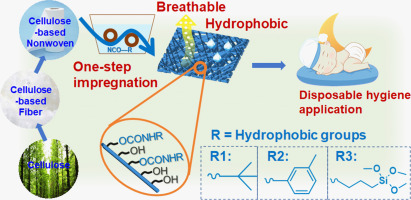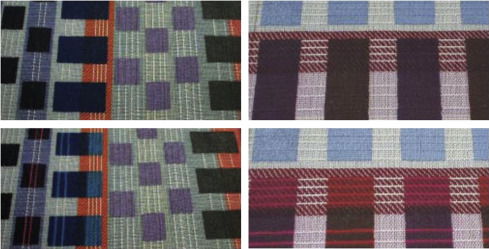Fabrics are more than just pieces of cloth—they have distinct properties that can significantly affect their functionality and use. Among these properties, the terms "hydrophobic" and "hydrophilic" frequently pop up, especially when discussing the fabric's interaction with water. In this article, we'll dive deep into understanding these two types of fabrics, their differences, and their practical applications. So, whether you're a textile enthusiast or just curious, let's explore the fascinating world of hydrophobic and hydrophilic fabrics.
Understanding Fabric Properties
Why Fabric Properties Matter in Textiles
Fabric properties dictate how materials behave in different environments and conditions. Think of fabric properties as personality traits—each fabric has unique characteristics that determine its best use. For instance, some fabrics are better suited for outdoor gear, while others are ideal for comfort wear. Knowing these properties helps in making informed choices when selecting materials for various applications.
Basics of Hydrophobic and Hydrophilic Behavior
The terms "hydrophobic" and "hydrophilic" are derived from Greek words: "hydro" means water, "phobic" means fear, and "philic" means love. Thus, hydrophobic materials repel water, while hydrophilic materials attract and absorb it. This fundamental difference in water interaction is crucial for understanding the roles and uses of these fabrics in everyday life.
What are Hydrophobic Fabrics?
Definition of Hydrophobic Fabrics
Hydrophobic fabrics are textiles that resist water. When water droplets land on such fabrics, they form beads and roll off the surface rather than being absorbed. This property makes them ideal for use in environments where moisture protection is essential.
Examples of Hydrophobic Materials
Common hydrophobic materials include polyester, nylon, and certain treated cottons. Some fabrics are inherently hydrophobic, while others are treated with coatings or finishes to achieve water repellency. For instance, outdoor jackets and umbrellas often use hydrophobic fabrics to keep the wearer dry.
Common Uses of Hydrophobic Fabrics
Hydrophobic fabrics are used in a wide range of applications, including:
Outdoor Clothing: Jackets, pants, and shoes designed for hiking or skiing often use hydrophobic materials.
Sportswear: Activewear benefits from hydrophobic fabrics to manage sweat and moisture.
Home Textiles: Sofa covers, tablecloths, and curtains are sometimes made from hydrophobic materials to prevent stains and spills.

image from sciencedirect.com
How Do Hydrophobic Fabrics Work?
The Science Behind Hydrophobicity
The hydrophobic nature of these fabrics is due to their molecular structure. Hydrophobic fabrics have low surface energy, which means that water molecules cannot easily adhere to them. This causes water to bead up and roll off, much like rain on a waxed car surface.
Surface Tension and Water Repellency
Surface tension plays a crucial role in how hydrophobic fabrics work. The cohesive forces between water molecules are stronger than the adhesive forces between water and the fabric surface, causing the water to form droplets. This property is enhanced in fabrics treated with water-repellent coatings.
Role of Nanotechnology in Hydrophobic Fabrics
Nanotechnology has revolutionized the production of hydrophobic fabrics. Nano-coatings create an additional layer that further reduces surface energy, making fabrics extremely water-resistant without compromising breathability or texture. This innovation is prevalent in high-performance outdoor gear.
What are Hydrophilic Fabrics?
Definition of Hydrophilic Fabrics
Hydrophilic fabrics, in contrast, are materials that readily absorb water. When water comes into contact with these fabrics, it spreads and soaks in rather than beading up. This property makes hydrophilic fabrics excellent for moisture management and comfort.
Examples of Hydrophilic Materials
Cotton, bamboo, and rayon are classic examples of hydrophilic materials. These fabrics have high absorbency rates and are often used in clothing and textiles where moisture absorption is desired, such as towels, bathrobes, and certain types of sportswear.
Common Uses of Hydrophilic Fabrics
Hydrophilic fabrics find applications in various fields, including:
Casual Clothing: T-shirts, undergarments, and loungewear often use hydrophilic materials for their comfort and breathability.
Medical Textiles: Bandages and wound dressings utilize hydrophilic fabrics to manage bodily fluids.
Cleaning Products: Sponges, mops, and cleaning cloths are typically made from hydrophilic materials for their ability to absorb and retain liquids.

image from sciencedirect.com
How Do Hydrophilic Fabrics Work?
The Science Behind Hydrophilicity
Hydrophilic fabrics have high surface energy, meaning they attract water molecules. The structure of these fabrics allows water to spread across the surface and be absorbed into the fibers. This is why materials like cotton feel damp and heavy when wet.
Capillary Action and Water Absorption
Capillary action is a phenomenon that describes how liquids move through narrow spaces without external forces like gravity. In hydrophilic fabrics, capillary action draws water into the tiny spaces between the fibers, allowing the fabric to absorb and hold moisture effectively.
Impact of Fiber Structure on Absorbency
The absorbency of hydrophilic fabrics depends on the structure of the fibers. Fabrics with more open, loose weaves or natural fibers with hollow structures, like cotton and bamboo, have higher absorbency rates compared to tightly woven synthetic fabrics.
Key Differences Between Hydrophobic and Hydrophilic Fabrics
Water Repellency vs. Water Absorption
The primary difference between hydrophobic and hydrophilic fabrics lies in their interaction with water. Hydrophobic fabrics repel water, making them ideal for environments where staying dry is crucial. In contrast, hydrophilic fabrics absorb water, making them suitable for applications where moisture management is needed.
Comfort and Breathability Factors
Hydrophilic fabrics generally offer better breathability and comfort, especially in warmer climates or during physical activity. They allow sweat to be absorbed and evaporate, keeping the wearer cool and dry. Hydrophobic fabrics, while effective at keeping external moisture out, can sometimes trap sweat, leading to discomfort.
Application-Based Differences
Hydrophobic fabrics are preferred for outdoor gear, rainwear, and sportswear where water resistance is key. Hydrophilic fabrics are better suited for everyday clothing, home textiles, and medical applications where absorbency and comfort are prioritized.
Choosing the Right Fabric for Your Needs
When to Choose Hydrophobic Fabrics
Hydrophobic fabrics are the go-to choice when you need protection from rain, snow, or spills. If you’re looking for a jacket for hiking, a tablecloth that resists stains, or a couch cover that won’t soak up every spill, hydrophobic fabrics are your best bet.
When to Choose Hydrophilic Fabrics
Hydrophilic fabrics are ideal for situations where moisture absorption is beneficial, such as towels, sportswear for light exercise, or everyday clothing in hot, humid climates. They help wick moisture away from the body, keeping you cool and comfortable.
How to Test Fabric Properties at Home
Simple Water Droplet Test
A simple way to test whether a fabric is hydrophobic or hydrophilic is by dropping a small amount of water onto its surface. If the water beads up and rolls off, the fabric is hydrophobic. If the water spreads and is quickly absorbed, it's hydrophilic.
Practical Uses of Each Fabric Type
Understanding whether a fabric is hydrophobic or hydrophilic can help you choose the right material for specific purposes, from making your DIY projects to selecting the best gear for outdoor adventures.
Common Myths About Hydrophobic and Hydrophilic Fabrics
Misconceptions About Durability and Performance
One common myth is that hydrophobic fabrics are always more durable than hydrophilic ones. However, durability depends more on the quality and weave of the material rather than its water-repelling properties. Similarly, hydrophilic fabrics are not inherently weaker or more prone to damage.
Clarifying the Maintenance and Care Requirements
Some people believe hydrophobic fabrics require less maintenance due to their water-repelling nature. While they may resist stains better, they still need regular cleaning and care, especially if treated with water-repellent coatings. Hydrophilic fabrics, while more absorbent, often dry out quickly and are easy to clean, making them equally low-maintenance.
Understanding the difference between hydrophobic and hydrophilic fabrics is essential for making the right choices in textile applications. While hydrophobic fabrics repel water and are perfect for situations where staying dry is key, hydrophilic fabrics absorb moisture, providing comfort and practicality in other scenarios. By considering these properties, you can select the best fabric for your needs, whether it’s for clothing, home textiles, or specialized equipment.
 English
English







